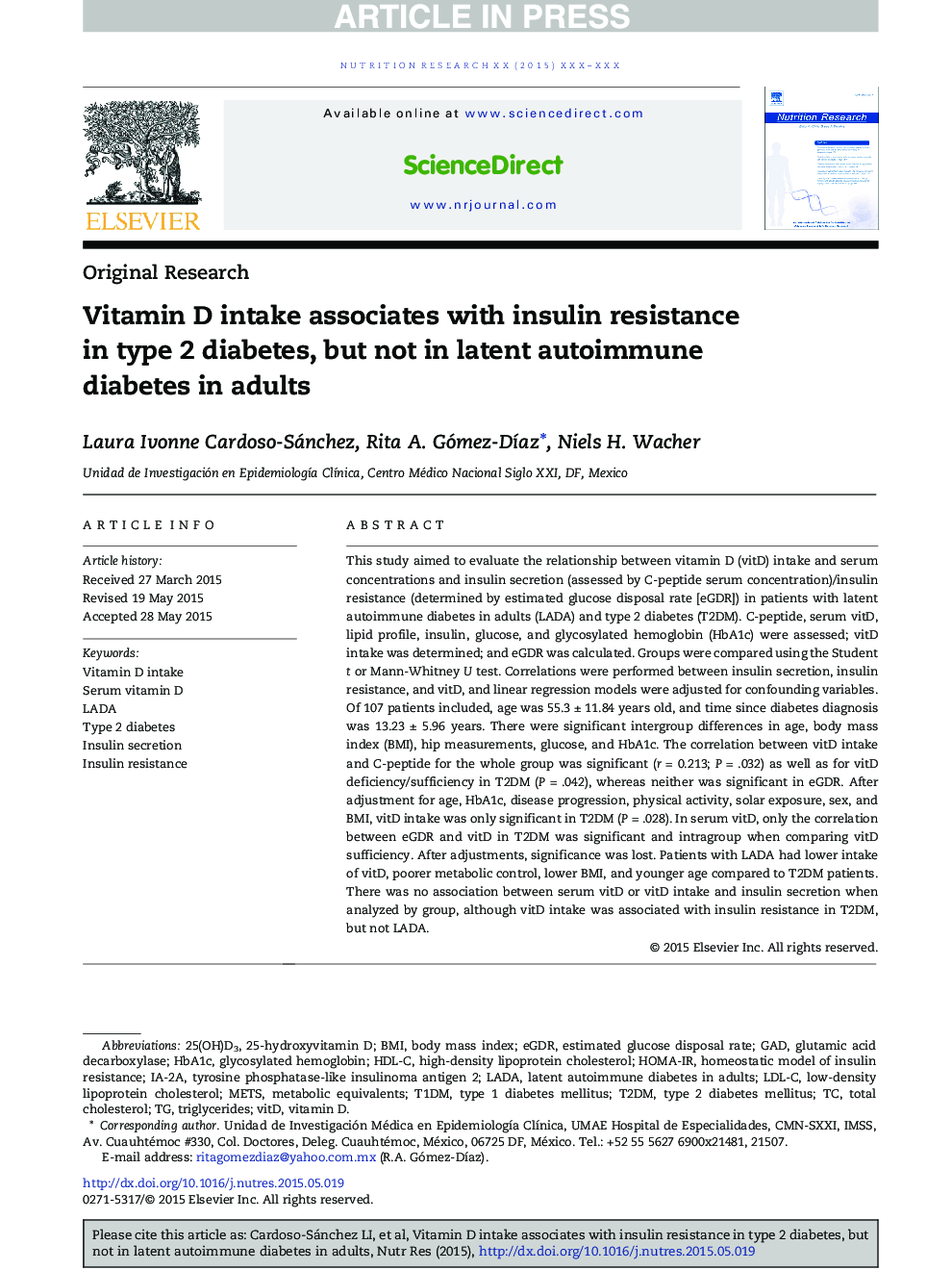| کد مقاله | کد نشریه | سال انتشار | مقاله انگلیسی | نسخه تمام متن |
|---|---|---|---|---|
| 5904345 | 1157978 | 2015 | 11 صفحه PDF | دانلود رایگان |
عنوان انگلیسی مقاله ISI
Vitamin D intake associates with insulin resistance in type 2 diabetes, but not in latent autoimmune diabetes in adults
دانلود مقاله + سفارش ترجمه
دانلود مقاله ISI انگلیسی
رایگان برای ایرانیان
کلمات کلیدی
HbA1cvitDSerum vitamin DIA-2AVitamin D intakeT1DMT2DMHDL-CLDL-CHOMA-IRGAD25(OH)D3 - 25 (OH) D325-hydroxyvitamin D - 25 هیدروکسی ویتامین Dglutamic acid decarboxylase - glutamic acid dearboxylaseInsulin secretion - ترشح انسولینTriglycerides - تریگلیسریدLatent Autoimmune Diabetes in Adults - دیابت بیخوابی خودکار در بزرگسالانtype 1 diabetes mellitus - دیابت نوع 1Type 2 diabetes - دیابت نوع 2Type 2 diabetes mellitus - دیابت نوع دوbody mass index - شاخص توده بدنBMI - شاخص توده بدنیLADA - لاداhigh-density lipoprotein cholesterol - لیپوپروتئین پرچگالی یا اچدیالMETS - متسHomeostatic model of insulin resistance - مدل هومستاتیک مقاومت انسولینMetabolic equivalents - معادل متابولیکInsulin resistance - مقاومت به انسولینGlycosylated hemoglobin - هموگلوبین گلیکوزیله شدهVitamin D - ویتامین دیtotal cholesterol - کلسترول تامLow-density lipoprotein cholesterol - کلسترول لیپوپروتئین با چگالی کم
موضوعات مرتبط
علوم زیستی و بیوفناوری
بیوشیمی، ژنتیک و زیست شناسی مولکولی
علوم غدد
پیش نمایش صفحه اول مقاله

چکیده انگلیسی
This study aimed to evaluate the relationship between vitamin D (vitD) intake and serum concentrations and insulin secretion (assessed by C-peptide serum concentration)/insulin resistance (determined by estimated glucose disposal rate [eGDR]) in patients with latent autoimmune diabetes in adults (LADA) and type 2 diabetes (T2DM). C-peptide, serum vitD, lipid profile, insulin, glucose, and glycosylated hemoglobin (HbA1c) were assessed; vitD intake was determined; and eGDR was calculated. Groups were compared using the Student t or Mann-Whitney U test. Correlations were performed between insulin secretion, insulin resistance, and vitD, and linear regression models were adjusted for confounding variables. Of 107 patients included, age was 55.3 ± 11.84 years old, and time since diabetes diagnosis was 13.23 ± 5.96 years. There were significant intergroup differences in age, body mass index (BMI), hip measurements, glucose, and HbA1c. The correlation between vitD intake and C-peptide for the whole group was significant (r = 0.213; P = .032) as well as for vitD deficiency/sufficiency in T2DM (P = .042), whereas neither was significant in eGDR. After adjustment for age, HbA1c, disease progression, physical activity, solar exposure, sex, and BMI, vitD intake was only significant in T2DM (P = .028). In serum vitD, only the correlation between eGDR and vitD in T2DM was significant and intragroup when comparing vitD sufficiency. After adjustments, significance was lost. Patients with LADA had lower intake of vitD, poorer metabolic control, lower BMI, and younger age compared to T2DM patients. There was no association between serum vitD or vitD intake and insulin secretion when analyzed by group, although vitD intake was associated with insulin resistance in T2DM, but not LADA.
ناشر
Database: Elsevier - ScienceDirect (ساینس دایرکت)
Journal: Nutrition Research - Volume 35, Issue 8, August 2015, Pages 689-699
Journal: Nutrition Research - Volume 35, Issue 8, August 2015, Pages 689-699
نویسندگان
Laura Ivonne Cardoso-Sánchez, Rita A. Gómez-DÃaz, Niels H. Wacher,